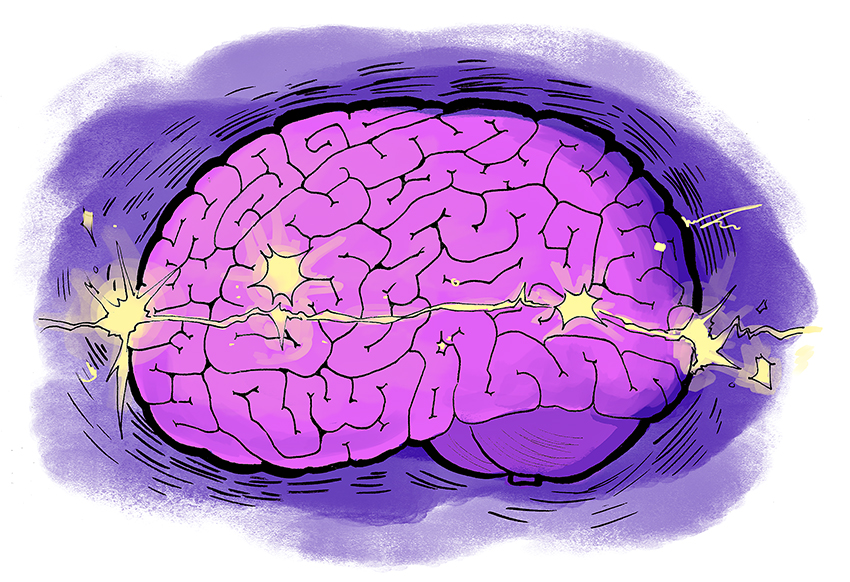A new UT research review sheds light on novel ways to train your brain.
The multi-institutional review focuses on the concept of neurofeedback, which uses measurements of an individual’s brain activity to inform brain training techniques. The paper, published in Nature Reviews Neuroscience on Dec. 22, discusses different neurofeedback methods and applications.
According to the paper, neurofeedback has contributed to scientists’ knowledge of how the brain works and holds potential for future clinical use.
An individual’s brain activity is currently measured using fMRI or EEG machines, which detect brain wave patterns through changes in blood flow and electrical activity, respectively.
Scientists began studying neurofeedback after past experiments showed that humans can control their own brain activity on EEGs in real time.
Jarrod Lewis-Peacock, UT assistant professor of psychology and co-author of the review, said the measured brain activity changes as a result of other factors; in other words, it is a dependent variable.
“We do some experimental manipulation and have the person think a certain way and see how their brain allows them to accomplish that,” Lewis-Peacock said. “Neurofeedback allows us to reverse that process — we change brain activity from a dependent to an independent variable. We can manipulate brain activity and see what consequences that has on behavior.”
Ethan Oblak, UT mechanical engineering graduate student and co-author of the paper, said the goal of the review was to find the best way to collect data about the brain and to examine past studies on the use of neurofeedback.
“We have a bunch of brain recording tools with their own drawbacks and tradeoffs,” Oblak said. “In this paper, we synthesize and see strengths and weaknesses of each technology.”
James Sulzer, UT assistant professor of mechanical engineering and last author of the study, said neurofeedback can be used to improve certain mental skills and treat different medical conditions. One application is brain-machine interfaces, which allow for brain activity to control external devices or machinery.
Past studies attempting to use neurofeedback for clinical applications, such as treating attention deficit hyperactivity disorder, have mixed findings. Early studies using EEG neurofeedback in clinical settings were spotty due to lack of a control group and the placebo effect, Sulzer said.
However, Oblak said that some studies on stroke patients have found neurofeedback helpful during rehabilitation.
“If I lose hand function as a result of a stroke, conventional therapy starts at the limb,” Oblak said. “You’re gonna try to move the hand, rehabilitate it from that level. We’re trying to use neurofeedback to do stroke rehabilitation within the brain.”
Although Lewis-Peacock said up to 30 percent of people cannot learn to control their own brain activity, there are multiple strategies for teaching people how to control neurofeedback signals. Some of these involve giving a subject explicit instructions, while others are indirectly conditioned to encourage a certain response.
“You can control your own brain activity without really knowing you’re doing it,” Sulzer said. “You just learn it.”
According to the study, neurofeedback is still early in development. Future challenges include teaching people how to control their own brain activity, determining efficacy through controlled trials and effectively combining different forms of measuring activity.
“There’s still a lot of basic science of the learning mechanism in showing someone what their brain is doing and us trying to understand, ‘what do people do with that information?’” Lewis-Peacock said. “It can be hard to verbalize what they’re doing. If I ask you, ‘What do you do to make a thumbs up sign on your right hand?’, you could do it, but it’d be hard to describe how you got your brain to do it.”















